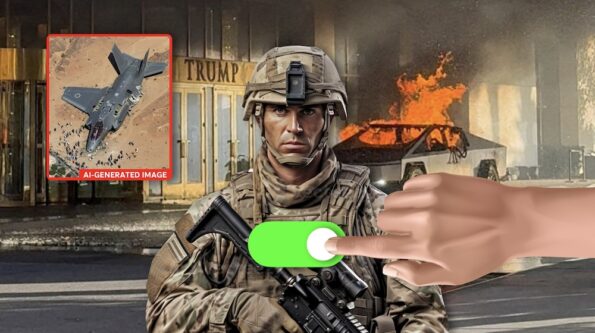Search
To search for an exact match, type the word or phrase you want in quotation marks.
A*DESK has been offering since 2002 contents about criticism and contemporary art. A*DESK has become consolidated thanks to all those who have believed in the project, all those who have followed us, debating, participating and collaborating. Many people have collaborated with A*DESK, and continue to do so. Their efforts, knowledge and belief in the project are what make it grow internationally. At A*DESK we have also generated work for over one hundred professionals in culture, from small collaborations with reviews and classes, to more prolonged and intense collaborations.
At A*DESK we believe in the need for free and universal access to culture and knowledge. We want to carry on being independent, remaining open to more ideas and opinions. If you believe in A*DESK, we need your backing to be able to continue. You can now participate in the project by supporting it. You can choose how much you want to contribute to the project.
You can decide how much you want to bring to the project.

“Is It OK for Me to Wear Camo in This Political Climate?” (“Is it OK for Me to Wear Camo in This Political Climate?”) Someone asked this question to Vanessa Friedman, fashion critic for the New York Times, and it hovers in the airspace like a sonic boom. In 2025, few gestures remain safe from the grammar of war. “Wearing camouflage is no longer just another fashion game but rather a charged choice in a climate of active wars and internal fractures”, Vanessa argued, while a veteran interviewed in the article stated that, in times of invasion and genocide, wearing it without having served in the military is equivalent to “stolen valor”.
A garment that previously evoked urban aesthetics or recycled punk is now read as adherence or mockery, and having to take a stand becomes inevitable. Although it may seem like an isolated indicator, it ultimately connects to the “militarization of the present” that advances within the everyday, the digital, and the symbolic. Uniforms, stances, tactics, confrontations.
“If you want to create a monocultural event, start a war,” said Nick Susi in a recent essay. The Super Bowl, Trump vs any other politician, Drake vs Kendrick, The Night of the Year, what unifies global attention today is the spectacle of combat. Gone are the great shared narratives that got everyone talking about the same thing at the same time. Now, the shared gravitational field is only activated if the structure of confrontation is reproduced between two sides in one fight with one winner. Entertainment and training for a moment in which everything is organized in terms of attack and defense.
The term “versus” instrumentalizes everything. Divergence is the prey of engagement. Mass entertainment opts for antagonism over consensus and algorithms reward extremes because extremes ensure interaction. One streamer humiliates another, one influencer massacres another, a rapper attacks their rival out of revenge in the middle of a concert, or an Instagram thread is riddled with aggressive comments from all sides. What were once marginal disputes are now billed as multi-format ritual battles that generate collective dopamine. “We’re back in the Coliseum.”
Gladiators must come from somewhere. The warlike aspect shifts to a world of affect in which young bodies are captured and mobilized for confrontation. Joshua Citarella explained this clearly several years ago when he said that the radicalization process doesn’t depend solely on algorithms but also on the combination of deficiencies (security, meaning, connection) that find their way into cultural “pipelines” acting as funnels toward more hardline positions. Hence, streaming platforms, live streams on KICK, or podcasts featuring exhibitionist “bros” become initiation headquarters where masculinity is consolidated through combat.
If these “radicalization funnels” function as channels for individual recruitment, what happens parallel to this is that communities need shared narratives to stay united. Recruiting isolated individuals isn’t enough. Ernest Bormann’s Symbolic Convergence Theory comes in handy here: groups consolidate identities through dramatic narratives that reinforce their cohesion. On social media, these narratives are set up as moral wars in which digital lynchings, micro-violence, or public humiliation serve an almost ritualistic function. They affirm belonging while at the same time attack what is foreign or punish what is different.
All that remains to do is clean one’s gun, reload ammunition, and make memes. In fact, now that you mention it, we can even view the Political Compass, with its four colored quadrants, as an interoperable war diagram: Left/Right, Libertarian/Authoritarian. The same could be said of other ideological frameworks that populate the internet, such as the Horseshoe Theory or the Nolan Chart.
Far from being simple memetic templates, these theories act like board games, imposing a perceptual framework that defines which positions are viable and which are disqualified, while at the same time making it difficult to imagine anything outside of this. No one sees beyond war when a war is being waged. In other words, if the logic that sets the mood and is in the air is that of war, these frameworks are integrated into the generalized militarization of culture. The Political Compass is as violent as a camouflage uniform, for although it doesn’t incite anyone to shoot it does discipline the political imagination and subjugate it to a closed field.
This journey goes from the purely aesthetic to the emotional/visceral, then on to the affective, and eventually culminates in perception. An essay such as this, then, cannot proceed without mentioning Jean Baudrillard and his exemplary The Gulf War Did Not Take Place (1991). In this text he theorizes that war is fought, above all, on screens, because “representation replaces experience and war becomes a flow of administered images.” This includes the horrific videos of bombings and dead children in Gaza, to the videos of Charlie Kirk’s murder, or any thread on X in which live information about the conflict in Ukraine is discussed. Constant broadcasting turns war into a permanent spectacle, a simulation that produces both attachment and exhaustion.
If perception is our true battlefield, the deployment of artificial intelligence (or what Ahmed Banafa describes as “war algorithms”) as “invisible weapons” only complicates our survival. These strategic instruments are capable of simulating scenarios, optimizing attacks, and producing propaganda on an industrial scale. What once depended on hierarchical chains of command can now be delegated to generative models that design plausible realities, from predicting enemy movements to fabricating narratives and deepfakes that justify people’s annihilation.
Any army can now flood a perceptual scenario with artificial images, no longer just to confuse experts or public opinion but, implicitly, to undermine the (perceptual) security of the majority through algorithmic suggestion, regardless of what happens in the arena. The decisive factor is no longer winning or prevailing “on the ground,” but rather capturing global perception. What was called perception management in the 1980s is now being reconfigured as cognitive warfare, and attempt to control what is believed and what is considered possible to believe. The ultimate struggle lies in determining how the facts will be interpreted.
War is inhaled. Its semantic field surrounds us, from the toxic dialectic of an exchange of comments on social media to the rules imposed on us for perceiving (and, therefore, experiencing) the world. What happens if we were to stop and listen, what would we hear? Anxiety weighs heavily and the future is sealed off by mounting catastrophes.
When everything collapses, however, war at least offers, paradoxically, a legible framework, with clear enemies and recognizable sides. Israel, Putin, Zelensky, a beef between rappers, or a viral thread between woke people and the far right are all distinct dimensions of the same confrontational dramaturgy. War functions as the last symbolic glue capable of sustaining a culture that no longer believes in shared projects and which organizes and channels its discontent through, precisely, war stories.
The “militarization of the present” permeates everything, including perception, mind, memes, boards, screens, ammunition, identities, free time, spectacles, positions, all that which can be decided, social interactions, discourses, expectations, and even the extent to which we are allowed to believe.

Frankie Pizá (Palma de Mallorca, 1984) is a cultural critic, educator, and founder of FRANKA™️, an independent media that analyzes the intersection of arts, technology, and culture. His work centers on a simple and unusual idea: “protecting the context” in a time of increasing disinformation, creative precariousness, and algorithmic noise. He has worked on landmark projects such as Primavera Sound, Red Bull Music Academy, and Concepto Radio, and has collaborated with various media and cultural platforms. In recent years, he has established himself as one of the most unique voices in the Spanish language when it comes to interpreting phenomena. His essays balance cultural criticism and contemporary theory and seek to explain what is happening in real time, using critical and accessible language.
"A desk is a dangerous place from which to watch the world" (John Le Carré)